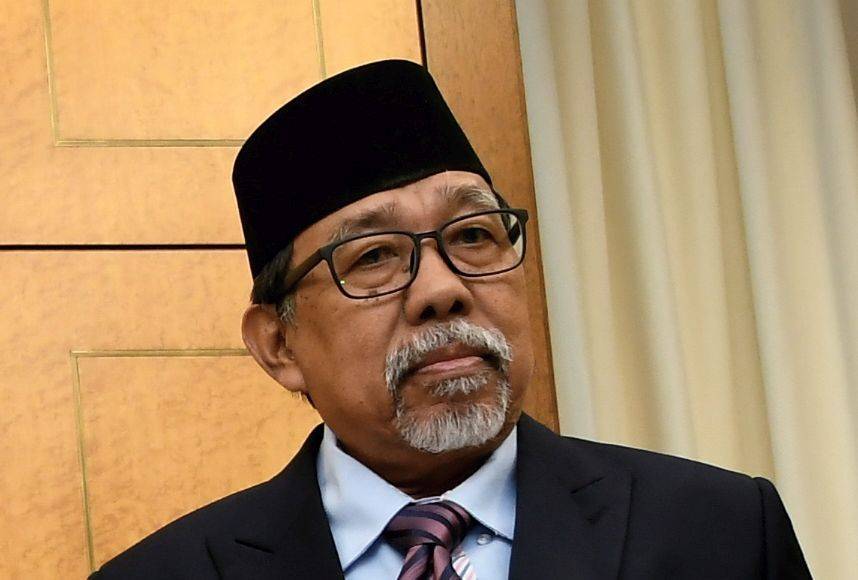EVERY time when an economic crisis happens, it reveals the structural weaknesses and impediments, offering an opportunity for the policymakers to rethink, reform and restructure for better and sustainable economic resilience.
Post the COVID-19 pandemic crisis when the economy has recovered and economic conditions more stable, countries will need to implement structural reforms to help sustain a lasting recovery while creating confidence that the recovery can be strong.
For Malaysia, excessive and unnecessary regulatory requirements, licensing regimes, uncoordinated and inconsistent regulations between Federal, state and local authorities, subsidies, selective market protection or litigiousness are identified as obstacles that need fixing.

We have to work on reviewing policies and regulations as well as implement structural reforms to reduce regulatory barriers to enhance market efficiency, ensuring policy transparency and certainty as well as sustaining better growth prospects.
Policies that change the way public sector work (public delivery services) and facilitate private sector and businesses are deemed as key catalysts to raise productivity, increase investment, create skilled and high-income employment, foster greater trade openness, increase labour market flexibility, and enhance financial resilience as well as making the domestic economy more resilient to shocks.
Malaysia’s limited fiscal space necessitates increasingly focused on broader tax reforms and expenditure rationalisation not only to rebuild strong fiscal buffer but also strengthen fiscal sustainability.
Structural reforms
Amid increasing complexities of domestic and external environment, green growth policies are an integral part of the structural reforms needed to foster strong, more sustainable and inclusive growth.
We can unlock new growth engines by creating incentives for greater use of natural resources efficiency; reducing waste and energy consumption; addressing environmental pressures; stimulating demand for green goods, services and technologies; and mobilising revenues through green taxes and through the elimination of environmentally harmful subsidies.
The question of implementing structural reforms is timing, sequencing (step by step or incremental or a big bang approach), initial economic and business conditions as well as weighing on the impact of structural reforms on the broader economy (society, businesses, sectors).
While economic reforms are often unpopular, painful and inflicting pains on some sectors in the short-term, the reforms may generate material gains for the economy in the longer term.
The short-term pains can be partially mitigated by temporary relief measures for the targeted vulnerable households. In the meantime, the Government must strengthen a comprehensive social safety net to help minimize the cost of structural adjustment.

For example, the implementation of subsidies rationalisation from a blanket approach to targeted groups helps to reduce wastage and improve price efficiency as well as re-allocate limited budget resources to productive sectors such as essential public infrastructure and services, healthcare, education and transportation.
The targeted subsidies accompanied by the cash handouts will buffer the vulnerable households against the impact of increase in prices and rising cost of living.
Earning trust
The removal of price ceilings and controls as well as product market liberalisation allow a healthy competition, hence enabling buyers to have wider choices to make informed purchases while businesses would be incentivised to invest and achieve an optimal allocation of resources.
The broadening of tax revenue base, subsidies rationalisation, re-sizing of expenditure as well as better governance and disciplined fiscal spending (minimise leakages and wasteful spending) would reduce the fiscal deficit and help to contain further rise in government debt and liabilities over time.
The Government’s commitment to fiscal sustainability and credibility will earn the public’s, investor’s and rating agencies’ trust and confidence in the government’s fiscal plans and ability to achieve its commitments such as being able to carry out tax reform, subsidy rationalisation and spending consolidation plans.
The Government can make structural reforms in the labour market to improve labour productivity.
Product market reforms such as reduction in tariffs and constraints for competition, easing of regulations and compliance costs as well as a competitive labour market reform to create a more business-friendly investment climate and operating environment can result in higher investment and productivity.
Demands on healthcare system will be greater due to demographic changes, including ageing population. Malaysia is only allocating 2.59% of its gross domestic product (GDP0 for public health expenditure which is below the benchmark of 4%-5% for public health expenditure in an upper middle-income country.
As the average cost of healthcare tends to rise as people aged, the reform of public healthcare system can also help to offset the increased healthcare costs.
Public pension reform
Strains on public pension system has been increasing. Public retirement charges have increased substantially by 8.8% per annum to RM29.1 bil in 2021 from RM11.5 bil in 2010, making up 12.6% of total operating expenditure and 12.4% of total federal revenue collected in 2021 (2010: 7.6% of total operating expenditure and 7.2% of total revenue).
Reforms of public pension is needed for ensuring funding and fiscal sustainability. Shifting towards defined contribution system reduces the financial risk to the pension plan.
With income not growing fast enough to catch up with rising cost of living and the withdrawal of Employees Provident Fund (EPF) savings (RM145 bil) during the pandemic, this has increased the risk to pensioners and retirees that their pension and saving will be insufficient for retirement.
A total of 6.62 million members or 52% of the total of 12.78 million members aged under 55 had savings of less than RM10,000 as of end-June 2022.
Raising retirement ages seems to make sense given rising life expectancy. But, this has to be accompanied by labour market reform to improve their employability skills and to create job opportunities both for older workers and for younger ones (between the ages 15 and 24) whose unemployment rate continued to record double-digit rate at 11.0% in 2Q 2022.
Economic reforms are best implemented when economic conditions are favourable so as to minimise the cost of adjustment.
As the electoral costs associated with structural reforms cannot be avoided, politicians may hold back on reforms or implement half-baked reforms for fear of political backlash. As such, populist considerations will be factored in the policy design.
We need reform-minded leaders and policymakers to do what is right for the country even though the structural reforms inflicted short-term pains on the society and business. The long-term gains are enormous – boost public’s and investor’s confidence, enhance competitiveness, increase economic growth and productivity as well as expand both domestic and foreign investment.
Equally important, reform needs a strong ownership and the political institutions to guide credible economic policy making, resolve social conflicts, and more engagements with the business community and civil society. – Aug 24, 2022
Lee Heng Guie is the executive director at Socio-Economic Research Centre (SERC) Malaysia.
The views expressed are solely of the author and do not necessarily reflect those of Focus Malaysia.











